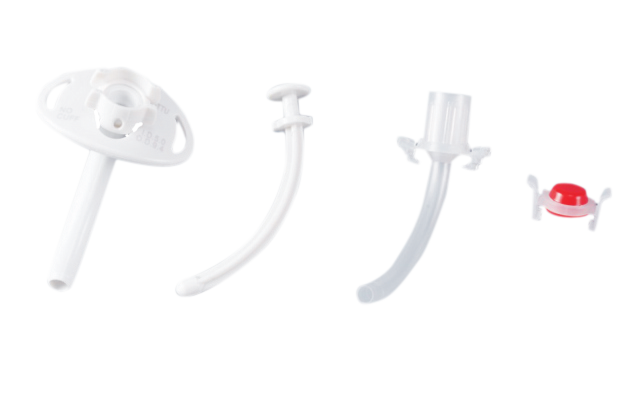
DTTU
The DTTU is a high-quality, affordable tracheostomy tube that is perfect for those who need a short-term or temporary solution. With its easy-to-use design, the DTTU can be inserted and removed with minimal effort, making it a great option for those who are not ready for a permanent tracheostomy tube.
| Ref. No.: | Size: | Qty. Cs: |
|---|---|---|
| NMR100832 | 5.0 | 100 |
| NMR100837 | 6.5 | 100 |
| NMR100841 | 7.0 | 100 |
The DTTU is a high-quality, affordable tracheostomy tube that is perfect for those who need a short-term or temporary solution. With its easy-to-use design, the DTTU can be inserted and removed with minimal effort, making it a great option for those who are not ready for a permanent tracheostomy tube.
A DTTU Disposable Tracheostomy Tube Uncuffed is a type of tracheostomy tube that is designed to be used for a single patient. The tube is made of soft, flexible material and is equipped with a cuff that can be inflated or deflated as needed. The tube is inserted through the patient's neck and into the trachea (windpipe) and is held in place by ties or stitches.
The DTTU Disposable Tracheostomy Tube Uncuffed is a safe and effective way to provide airway access for patients who cannot tolerate a traditional tracheostomy tube. The tube is easy to insert and remove, and the cuff can be inflated or deflated as needed to ensure comfort. The DTTU Disposable Tracheostomy Tube Uncuffed is an ideal option for patients who require short-term airway access.
A DTTU disposable tracheostomy tube uncuffed is most often used in cases where the patient does not need long-term use of the tracheostomy tube. This type of tube is also less likely to cause irritation and discomfort for the patient. The DTTU disposable tracheostomy tube uncuffed is inserted into the trachea (windpipe) through a small incision in the neck. The tube is then connected to a suction device that helps to keep the airway clear.
There are many benefits of using a DTTU Disposable Tracheostomy Tube Uncuffed. First, it is much more comfortable for the patient. Second, it eliminates the need for cuff inflation and deflation, which can be a time-consuming process. Third, it reduces the risk of tracheal damage and infection. Fourth, it allows for easy removal of the tube if necessary. Fifth, it is less expensive than other types of tracheostomy tubes.
Although the DTTU disposable tracheostomy tube is considered safe for use, there are some risks associated with using this type of tube. One of the most common complications associated with using a DTTU disposable tracheostomy tube is that it can become dislodged from the trachea. If this happens, it can result in serious health complications, including respiratory distress or even death. Additionally, if the tube is not inserted properly, it can cause bleeding or other damage to the trachea.
A DTTU is a Disposable Tracheostomy Tube Uncuffed. It is a tube that goes down your throat and into your trachea (windpipe). The DTTU has a balloon at the end that is inflated to keep the tube in place. The DTTU also has a port (opening) on the side of the tube near the top. This is where you can insert a suction catheter to remove secretions from your airway.